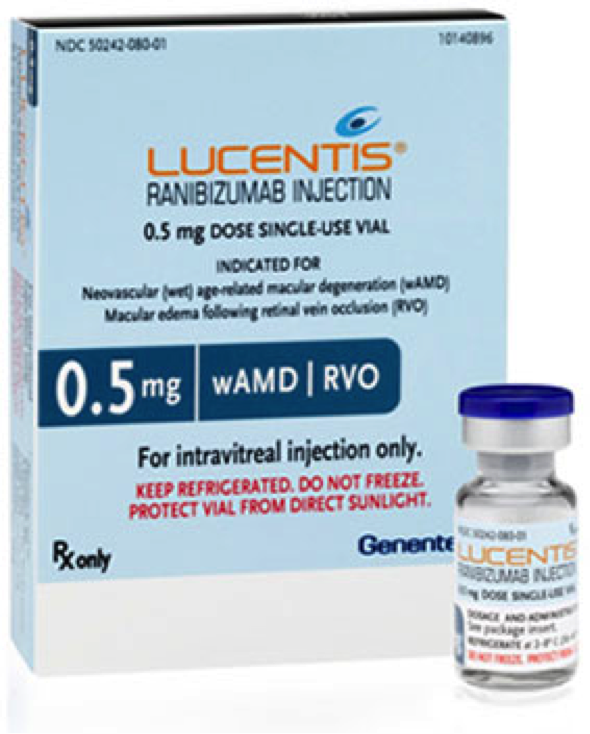Three different treatments for wet age-related macular degeneration – which one do I choose?
This is the second part of a 3-part series of posts about treatments for Wet AMD.
Lucentis – the powerhouse treatment
Lucentis (ranibizumab) is a medicine that blocks vascular endothelial growth factor, a molecule involved in the development of new blood vessels under the retina in wet age related macular degeneration.
In fact it’s fair to say that Lucentis is the most researched medicine for wet age related macular degeneration to date and has been the leading treatment for some time.
It is licensed for use in the eye (unlike its ‘cousin’ Avastin) and has been subject to many safety and clinical effectiveness trials over several years. It has also been subject to longer term safety and effectiveness studies.
In the UK, Lucentis was approved by the National Institute of Clinical Excellence (NICE) as the first ant-VEGF treatment for wet age related macular degeneration based on its cost effectiveness and improvement to eye health.
If you have ever been treated in a UK NHS hospital, it is likely that you have received Lucentis injections for your wet age related macular degeneration.
It is metabolized quickly in the eye and initially needs to be given every 4 weeks into the eye to gain maximum effect. With time the intervals between injections generally increase as the condition slowly ‘burns itself out’ leaving the majority of patients with fewer injections in later months or years.
Are there any instances that you can’t have Lucentis?
Yes. It is advisable that patients should avoid anti-VEGF injections (such as Lucentis) if they have had a recent stroke or heart attack. This is because research into these anti-VEGF medicines shows that a small amount can get absorbed into your body via your eye injection. Patients who have had recent strokes or heart attacks may get a worsening of their condition.
It is important to note that if you have not had a recent stroke or heart attack, research shows that Lucentis will not increase the chance of you having one.
Lucentis reigned supreme for years. The only way that Lucentis was going to be toppled off its perch was to address the issue of the 4 weekly interval needed between the intravitreal injections and block more VEGF types.
That is where Eylea came in.
If you have any questions about Lucentis or about receiving private treatment for wet age-related macular degeneration, please call me on 07919 895 448.
In my next post I’ll discuss Eylea – the challenger to the throne…


